32 practical steps you can take to help your dog lose weight
Is your pup carrying a few extra pounds? Here are 32 ways to help your dog lose weight.
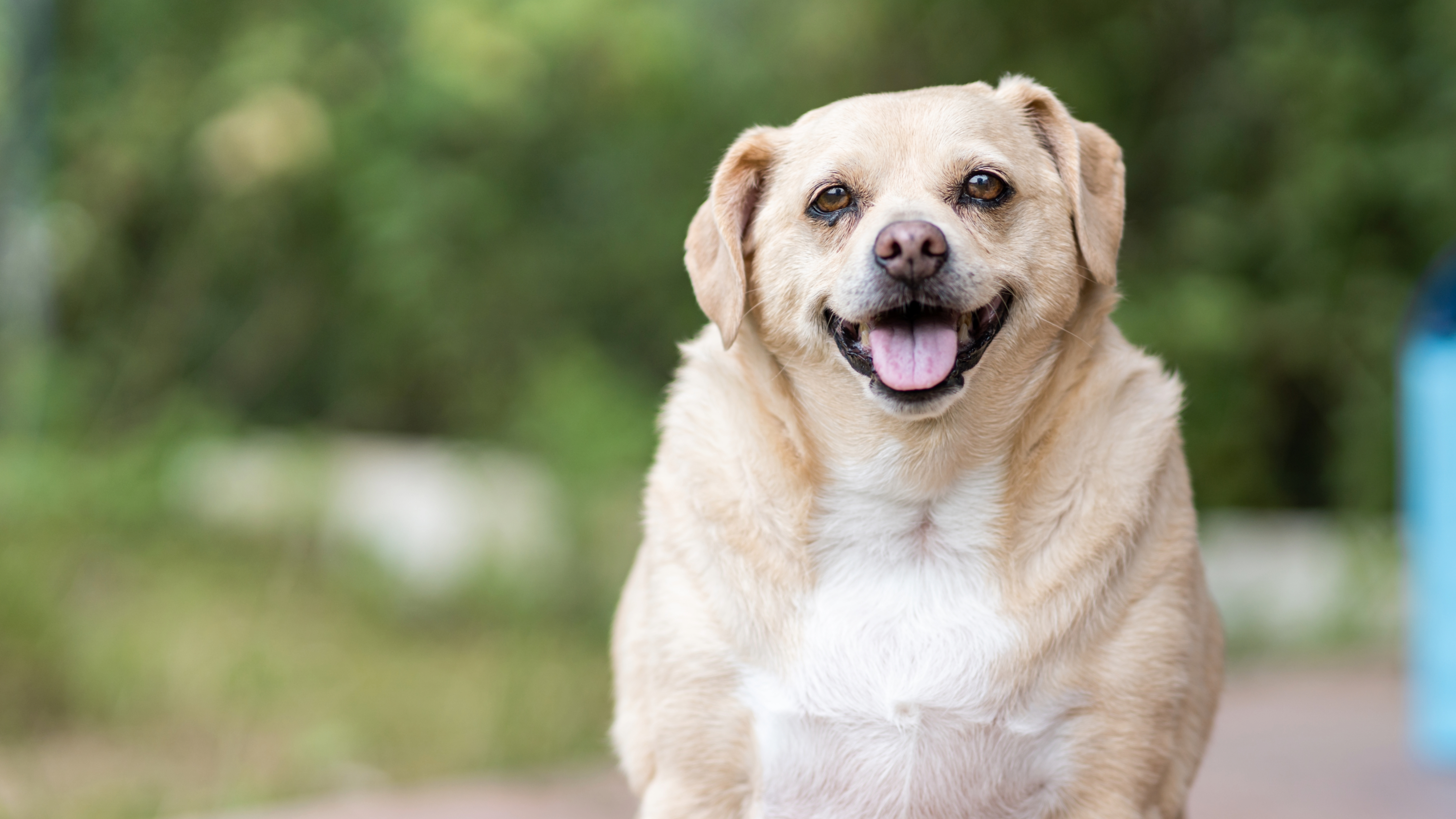
Is your dog overweight? If so, there are plenty of things you can do to help your dog lose weight and get healthy again. More than half of our canine companions weigh more than they should and all that excess weight is tied to a myriad of health issues. When it comes to preventing excess pounds in our pup, awareness is key.
When it comes to what to do if your dog is overweight, you’ll be relieved to hear it’s not as complicated as it might seem. While it does take time, patience, and consistency, getting your dog to a weight that’s healthy for their breed, age, size, and activity levels can go a long way in helping to keep them in good condition.
From scaling back their portions of the best dog food to ensuring they get enough exercise each day, here are some simple things you can do to help your dog lose weight…
32 things you can do to help your dog lose weight
1. Determine if your dog is overweight
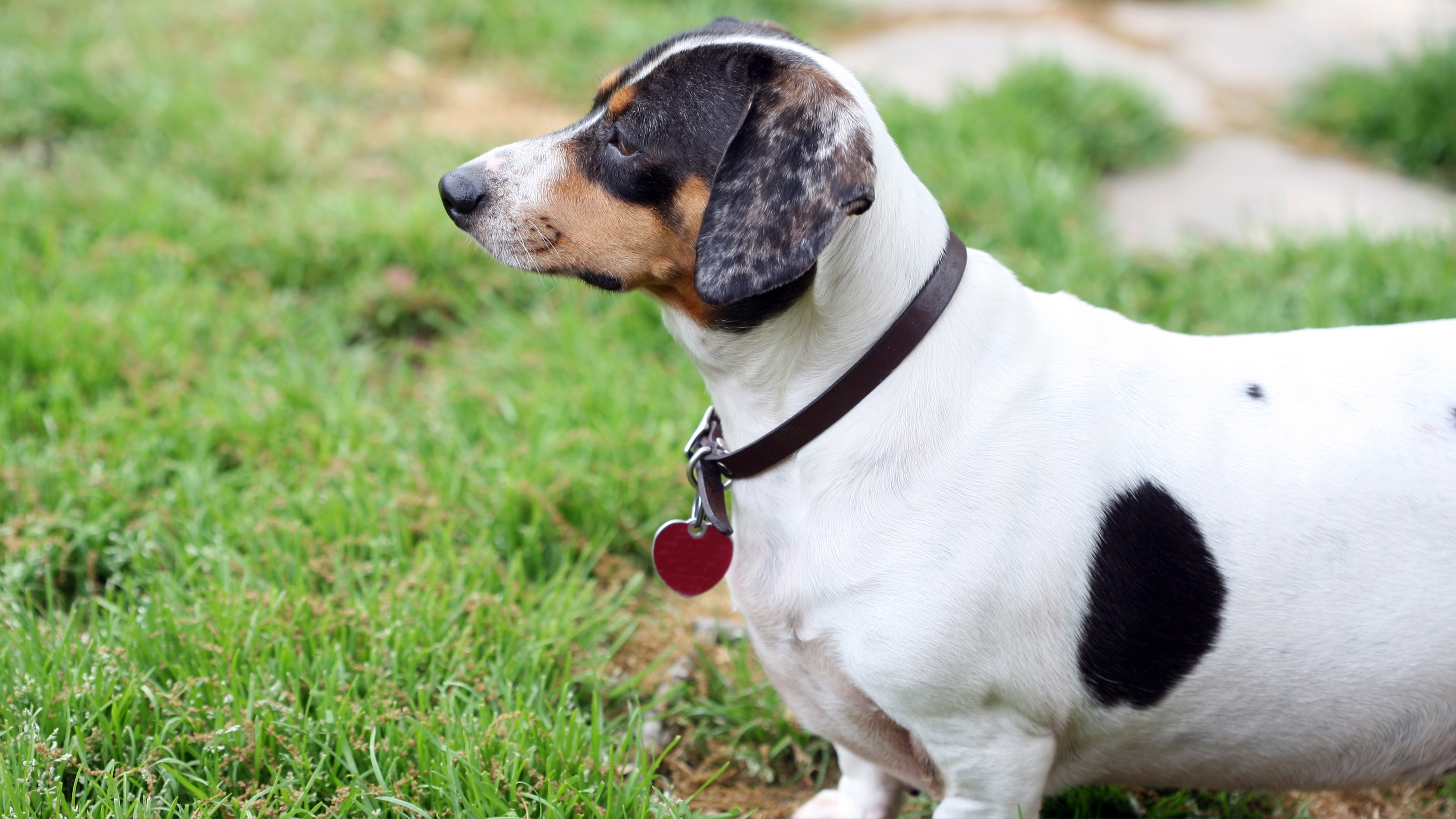
While it may sound obvious, before starting your pup on any weight loss regime, you first want to make sure they are in fact overweight. Your dog’s ideal weight will depend on their breed, gender, and age, and there’s a simple way you can check this at home. If you can’t see your dog’s ribs but you can feel them when you gently run your hands down their sides, that’s a good sign your pup is the correct weight. If you can’t feel them, that’s a good indication that they’re overweight.
2. Pay attention to how much you’re feeding them

Whether it’s the best dry dog food or a wet food alternative, it’s easy to overfeed your pup. There are many things that will influence your dog’s dietary needs, including their breed, age, activity level, and whether they’ve been spayed or neutered. Most of us use the back of the kibble packet or food tin to determine how much to feed our dogs, but these are generally too broad or vague. Your vet has a variety of measures they can use to determine the correct daily caloric intake to your pup, so it’s worth consulting with them.
3. Practice portion control

Portion control is vital when it comes to weight management, but you don’t want to drastically reduce your pup’s meals overnight as their body will need time to adjust to their new diet. Instead, opt to reduce your dog’s portions by 10% each day until you reach the correct portion size.
4. Change their diet

Has your dog been eating the same tin of the best wet dog food since they were a puppy? Or chowing down on the same kibble for years? If so, it may be time for a change. A lot of the dog food options lining our shelves are ultra-processed and full of fillers, neither of which is good for your fur friend’s waistline. Opt for a clean ingredient list and a nutrient-dense dish as this will help your pup feel fuller for longer.
Get the best advice, tips and top tech for your beloved Pets
5. Factor in treats
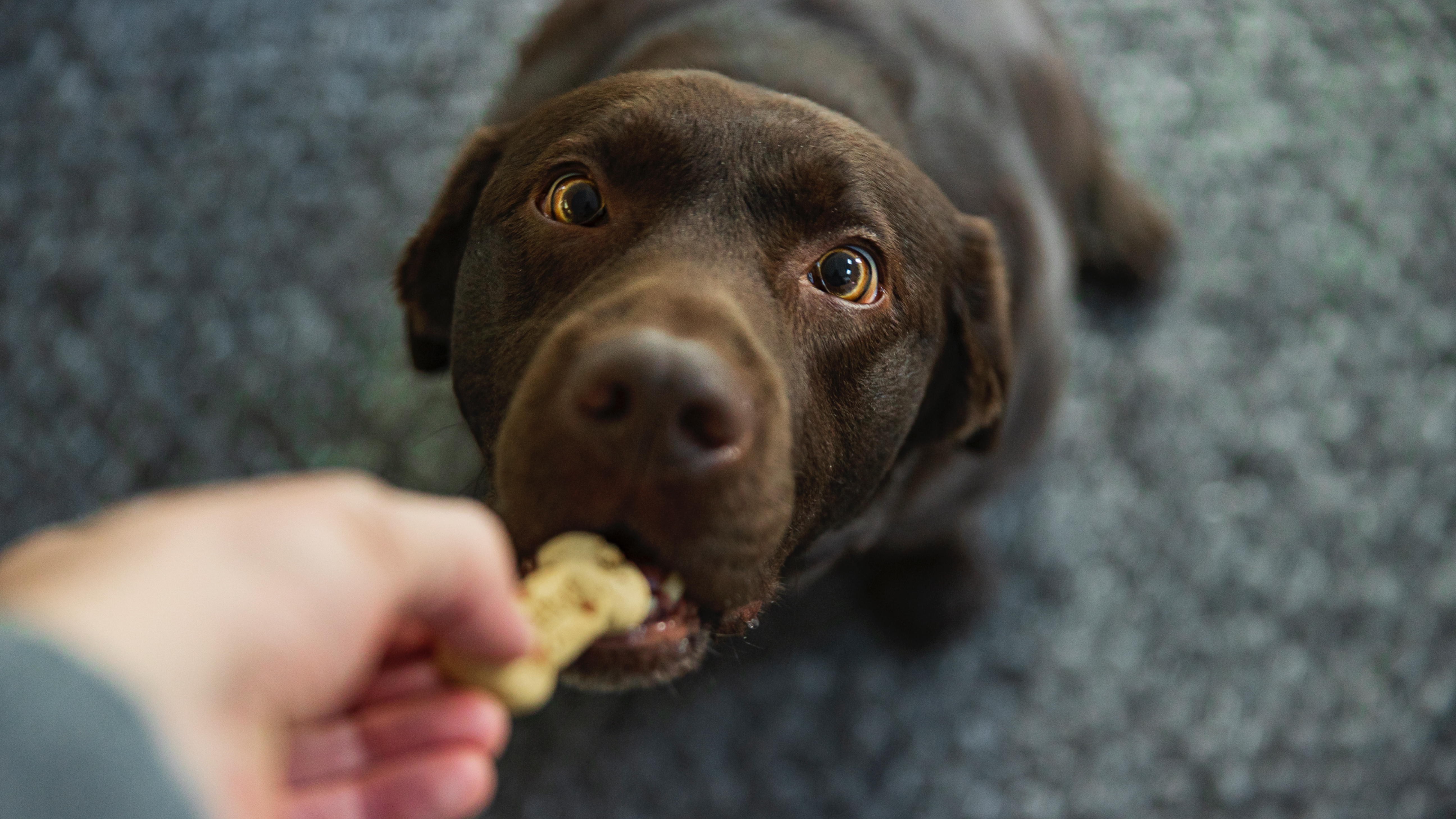
Do you feed your canine companion the best dog treats? If you’re anything like us, you likely use treats as a reward for good behavior or as a way to motivate your pup during training sessions. However, it’s important to note that treats are calorie-dense and they quickly add up if they’re being given on a regular basis. Treats should be factored into your dog’s diet and makeup no more than 10% of their daily calorie intake.
6. Weigh them regularly

Just like we humans tend to weigh ourselves to monitor our progress if we’re trying to lose weight, weighing your dog can be a really helpful way to ensure they’re losing weight in a gradual and sustainable way. We recommend weighing your dog every fortnight and recording it in a diary so you can keep track of how they’re doing.
7. Rule out any medical conditions
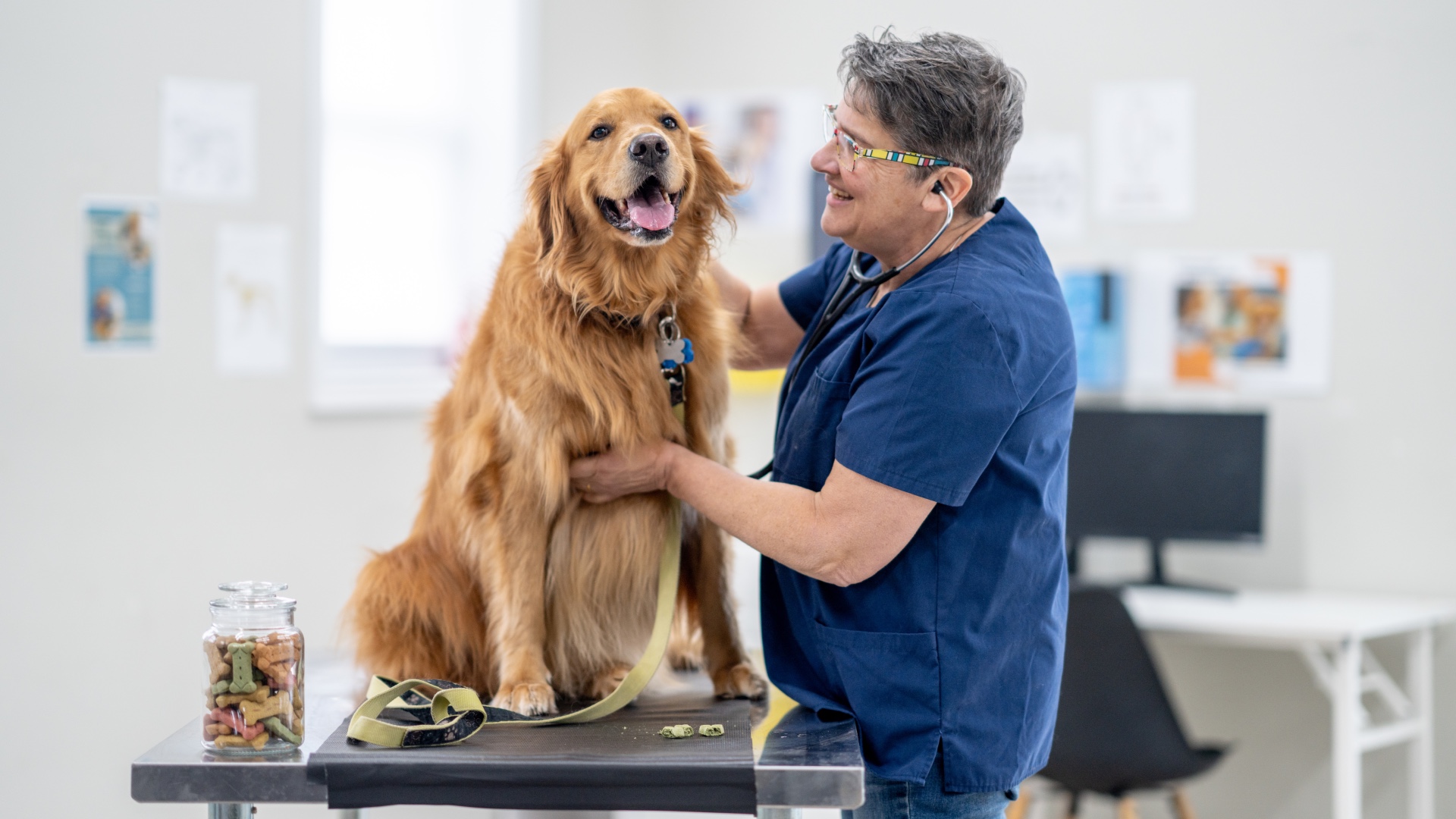
Is my dog sick? It’s a question you may be asking if your pup is gaining weight for no apparent reason. If you have your dog on a weight loss diet and you’re feeding them the correct portion sizes, it’s worth getting them checked over by a vet to rule out any underlying health conditions. There are many common dog diseases that can cause weight gain and your vet will be able to test for these to ensure they’re not preventing your pup from losing weight.
8. Find other ways to reward your pup

Most of us turn to food treats when we want to reward our pup for good behavior, but you’d be amazed at how quickly those calories add up. Instead of food, try and find other things your pup likes that can act as a reward. Many dogs love being praised, others adore a good cuddle, and some dogs see going for a walk or playing with their favorite toy as a reward. Find what works for your pup and go with that.
9. Ensure everyone in your family is on board

One of the most important things when it comes to your dog losing weight is to ensure that everyone in your home is willing to come along on the journey. If someone is sneaking your pup extra food when you’re not looking, they won’t lose weight and their health could be further jeopardized.
10. Take your dog for at least two walks per day

While the length of the walk will vary based on your dog’s breed, age, and mobility, regular exercise is vital when it comes to weight loss. One of the easiest forms of exercise is walking. Dogs need exercise to burn fat, and keep their hearts strong and their minds active, but what you do on those daily strolls is up to you. When it comes to our top tips to help keep dog walks fun, we recommend incorporating things like scent work, doggy parkour, and fun games like fetch.
11. Some dogs need more exercise than others
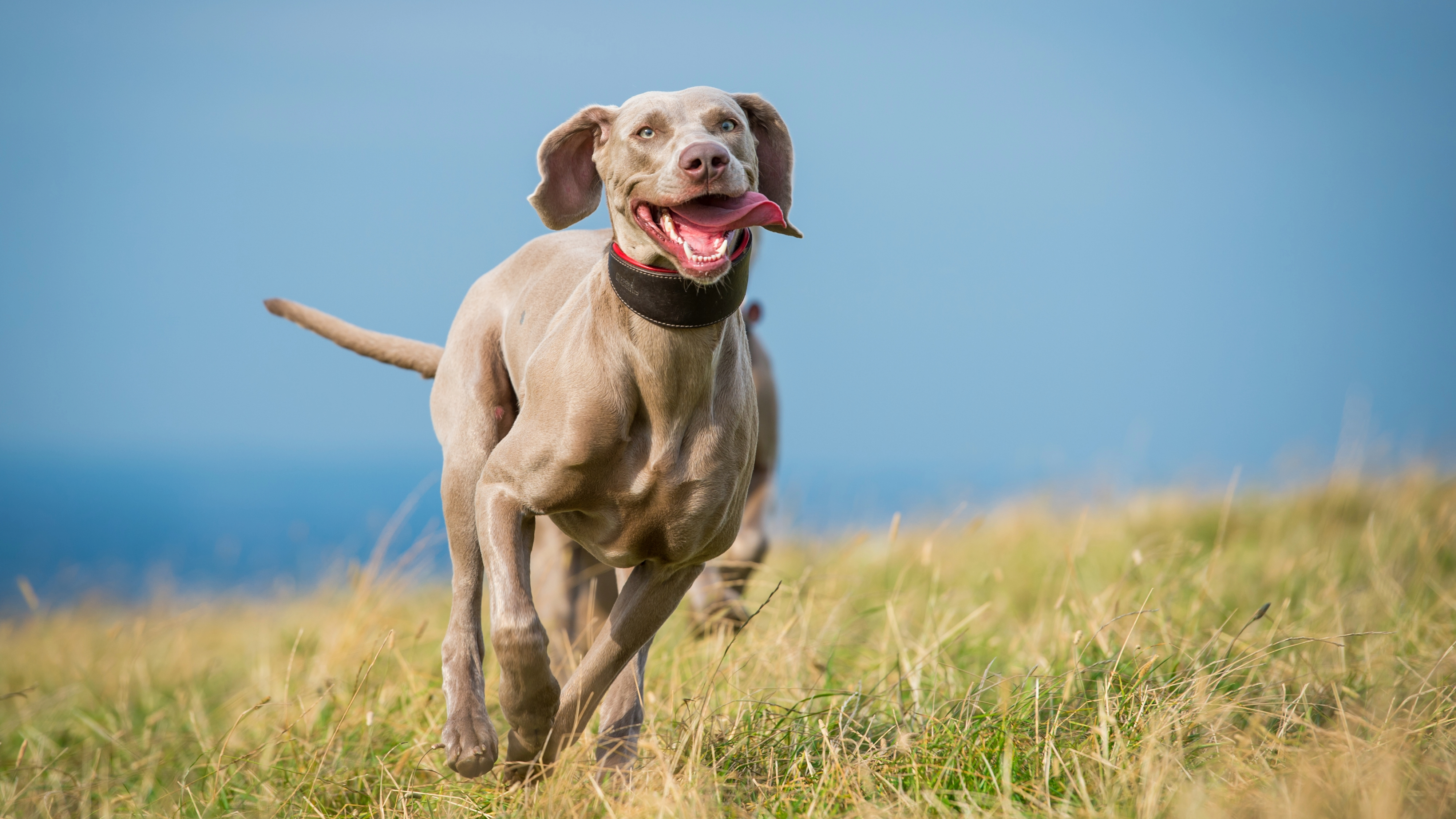
Not all dog breeds have the same exercise needs, so while a short walk around the block twice a day will be enough for a pug, the best farm dogs (like the Australian Shepherd) will need a lot more. Schedule frequent, longer walks if you have a high-energy pup that was built to work as short walks won’t be enough to keep the weight off.
12. Play with your pup regularly

We understand that it can be hard to find the time to play with all the other commitments in your life, but even one 15-minute session with the best dog toys can make a huge difference when it comes to helping your dog shift those stubborn pounds. Whether it’s a game of tug of war, fetch, or chase, spend time outside of your daily walks encouraging your dog to be active.
13. Feed smaller meals more often

Rather than giving your pup all of their food in two sittings, why not try feeding smaller meals more frequently? Feeding your dog multiple smaller meals across the day can help them burn more calories than two bigger meals and it can also help prevent them from eating too quickly, which will aid their digestion.
14. Schedule feeding times

Dogs thrive on routine, so feeding your pup at set times throughout the day can be a great idea. Not only will this help you remember when their next meal is due, but it’s also wonderful for regulating their metabolism and digestive system. Not home during the day? Not to worry — why not consider investing in one of the best automatic pet feeders. These devices are brilliant for taking the fuss out of feeding and will make sure your pup’s meals are served up at the correct time regardless of whether you’re home or not.
15. Limit table scraps

We know, those adorable pleading faces are just so darn irresistible, but when it comes to weight loss, limiting table scraps is essential. Just like any other treat, table scraps can soon add up and they’re often high in calories and low in nutrients — especially if the human food you’re feeding your pup has been cooked in butter or contains other calorie-rich ingredients.
16. Track their progress

One of the best ways to help your dog on their weight loss journey is to track their progress. We highly recommend recording everything your pup eats, how much they weigh, and what exercise they’ve done. In terms of keeping tabs on their activity levels, why not try one of the best GPS pet trackers with activity monitoring? This will tell you how many steps your pup is doing each day as well as provide you with other vital health information.
17. Give supplements a try
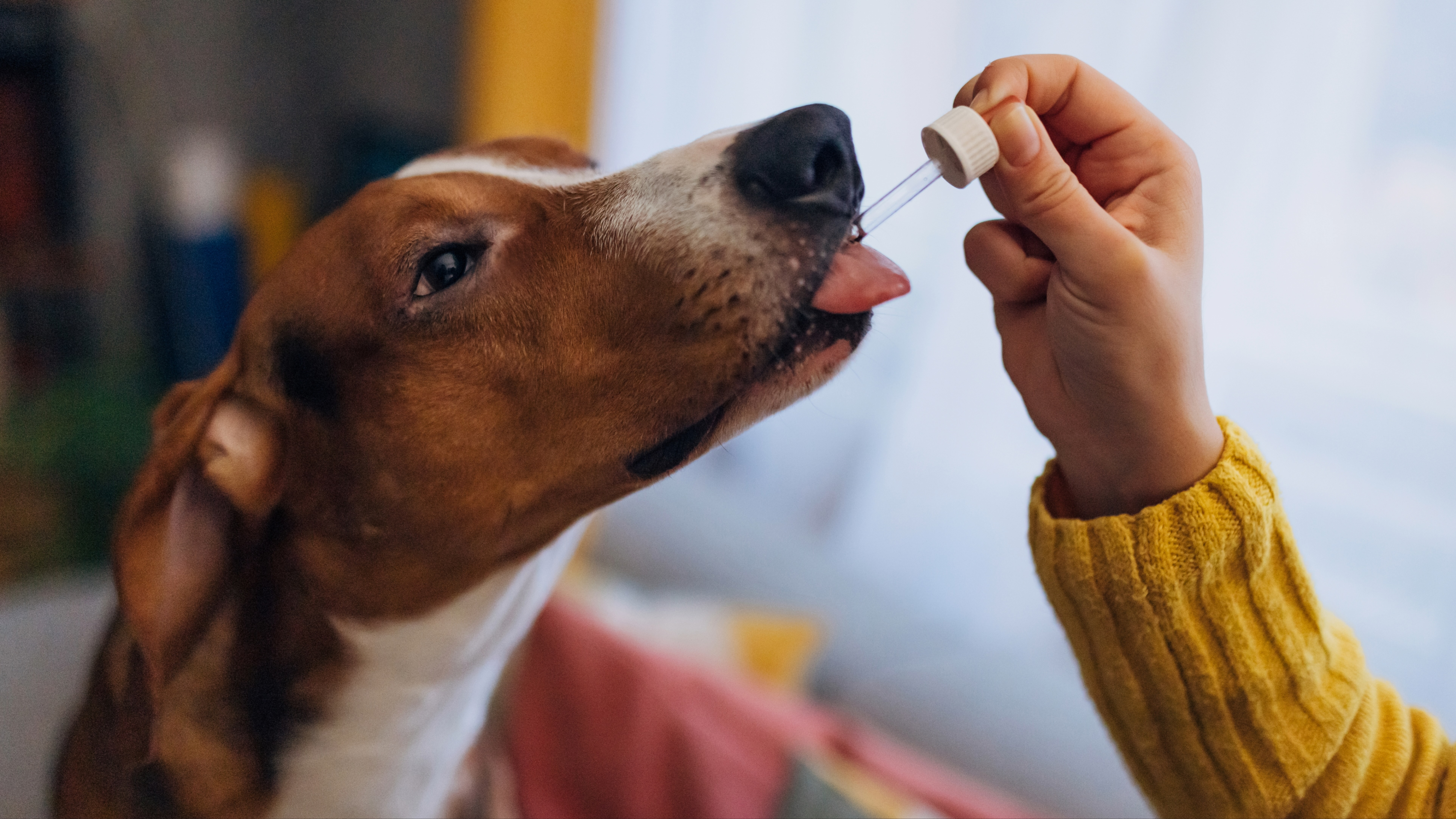
While supplements alone can’t help your dog lose weight, they may help to make your dog’s new weight loss regime a bit easier. For example, joint pain in dogs, caused by arthritis and other health conditions, can make exercising difficult and painful — a supplement containing glucosamine and chondroitin may assist in making movement more comfortable.
18. Limit carbs

Many ultra-processed dog foods are packed with carb-based fillers, most of which come from cereal grains. Focusing on lower carb, whole, fresh foods can help keep your dog satisfied for longer plus aid weight loss at the same time.
19. Use fruit and veggies as treats

When most of us think of dog treats, we tend to think of pre-packaged items or delicious table scraps, but rewarding your pup with fruit and veggies can be a wonderful way of giving them a tasty and nutritious snack that won’t affect their waistline. Pieces of carrot, broccoli, cucumber, blueberries, apples, and bananas are all fantastic options, although make sure you feed fruits that are higher in sugar in smaller amounts.
20. Know the difference between begging and hunger

Dogs will often approach their owners and beg for food, but it’s important to note that begging often has nothing to do with hunger. If your pup is well fed, begging is likely them trying to get your attention — if you reinforce this by giving them food, the begging will continue. Instead, trust your instincts and if you know your dog has recently eaten, resist the urge to feed them when they beg.
21. Ease your dog into their new diet

When it comes to changing dog food or adopting a new diet, never go cold turkey and abruptly change what they’re eating or how much. If you’re swapping your dog over to a new food, feed them 75% of their old food and 25% of their new food for the first few days, then move to 50/50 and then 75% of their new food and 25% of their old food before phasing out their old food completely. The same goes for portion sizes, be sure to reduce these slowly.
22. Try swimming
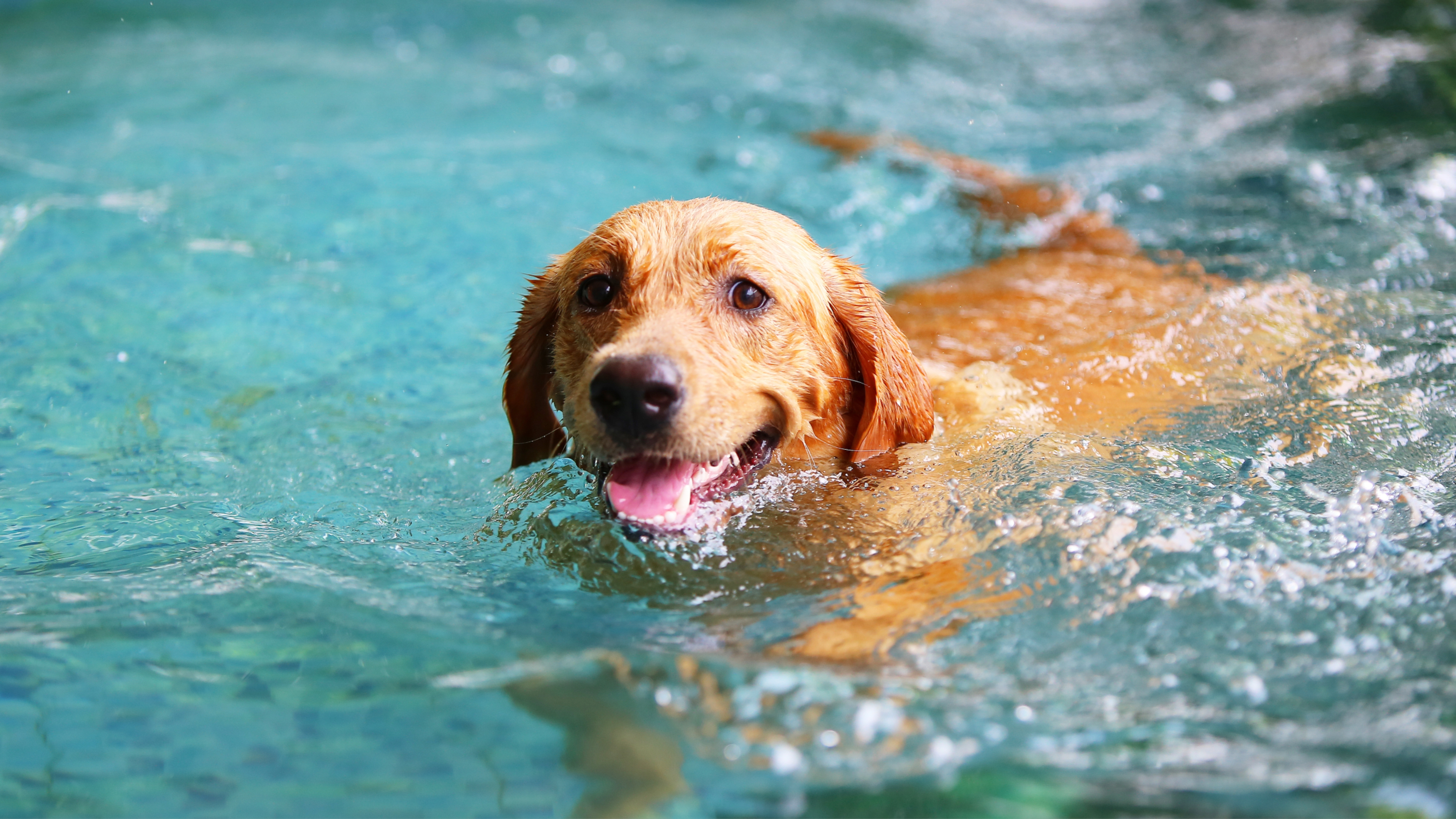
There are so many ways your dog benefits from swimming — with weight loss being just one of them! Swimming is a wonderful low-impact activity for senior dogs or those who struggle with joint pain or mobility issues as it’s gentle on the body while still providing a great workout. Plus, it’s a fantastic activity that you can do together, which is brilliant for bonding.
23. Be mindful of your dog's age

Weight gain is a huge concern for older dogs as it increases the risk of many diseases and can profoundly affect their quality of life. As senior dogs slow down, they need fewer calories and require food that’s easier to digest. Carefully considering the portion sizes you’re feeding your older pup is particularly crucial given they may not be able to exercise to the same extent they once were.
24. Keep a food diary

When it comes to your dog’s weight loss journey, we highly recommend keeping a food diary. Record everything they eat each day — including treats — and include the portion size. Often we underestimate just how much food our pets are chowing down on each day, so writing it down can give you a good visual and help you get an idea of whether any adjustments need to be made.
25. Try an automatic feeder

An automatic pet feeder can be well worth the investment if you want to take the fuss out of thinking about your dog’s meals and ensure they’re only eating when (and what!) they should be. Automatic feeders let you control the portion size and if your pup prefers to eat little and often, you can set the feeder to release small meals across the day.
26. Go for a hike together
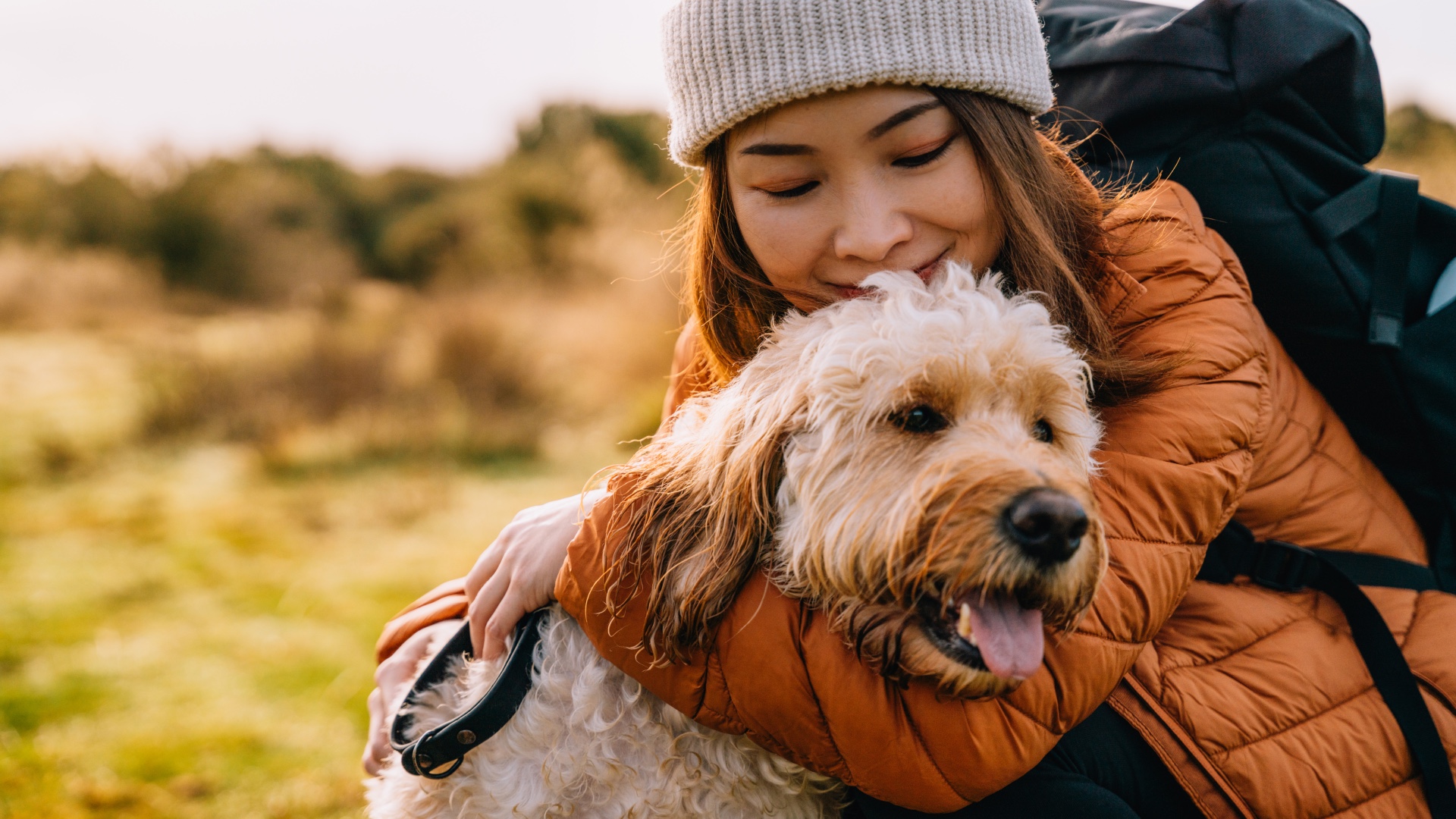
Hiking with a dog is a fantastic workout — both for them and you! Plus, it’s a lovely way to strengthen your bond and share quality time together. If you want to help your pup shed some pounds, hitting the trails together is a fun way to do it.
27. Crate your dog when you eat

If you find it hard to resist sharing what’s on your plate or you have a pup who loves to sit and beg at mealtimes, we highly recommend popping them in a crate in another room while you eat. This will remove the temptation to feed your pup table scraps and it will put a stop to table surfing or other behaviors you’d rather not have your dog engaging in when you’re eating.
28. Make sure they have plenty of water
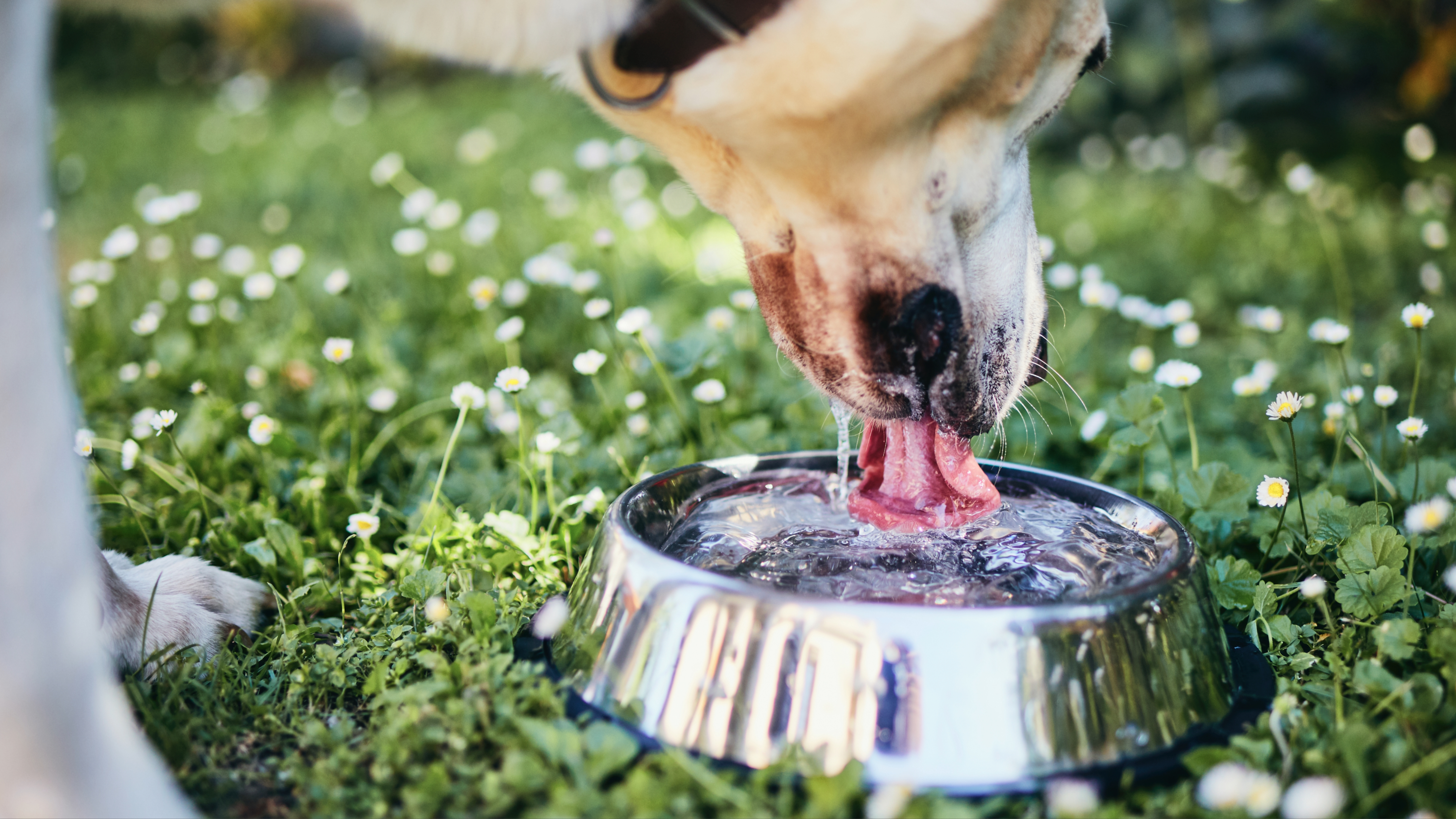
Just like us humans, dogs will often confuse hunger with thirst. Instead of food, offer your dog plenty of fresh water if you notice them eyeing up their food bowl — a big drink of cold water can help fill up their stomach and satisfy their craving.
29. Take your dog’s breed into consideration
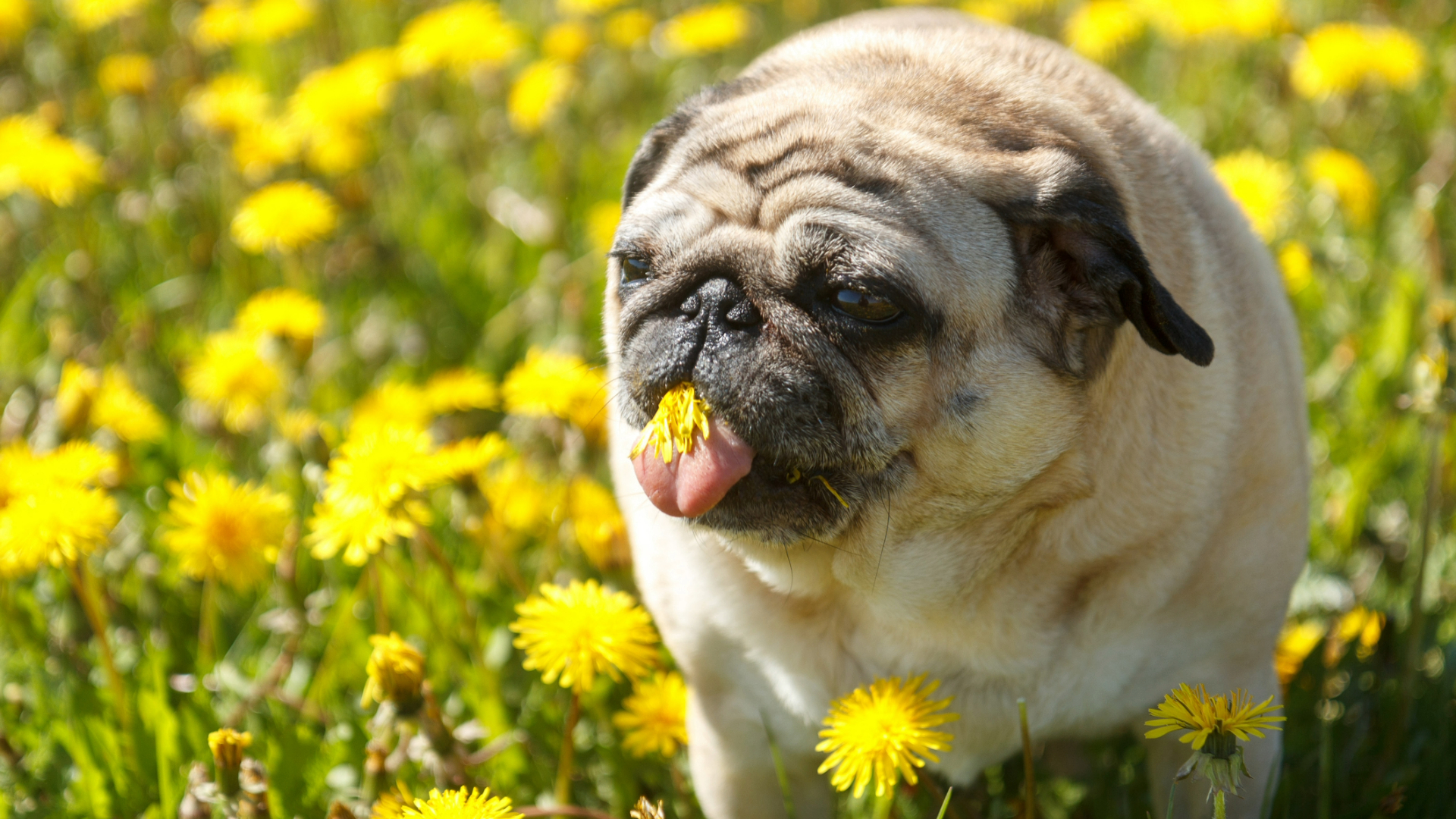
Unfortunately, some breeds are simply more prone to weight gain than others. Beagles, pugs, golden retrievers, Labradors, and bulldogs are just some of the breeds that are at risk of obesity.
If you have a dog that’s predisposed to weight gain, it’s vital that you serve level, as opposed to rounded, portions as that one small change can make all the difference when it comes to helping your dog to shed those excess pounds.
30. Use a puzzle feeder

There are lots of reasons to use a dog feeding puzzle and they can be hugely beneficial when it comes to weight loss. Dog puzzle toys make your pup work for their food, which slows down the pace at which they eat and helps keep them fuller for longer. Plus, they’re wonderful for providing mental stimulation and reducing problematic behaviors, so puzzle feeders are a win-win!
31. Consult your vet

When it comes to helping your dog lose weight, we recommend you speak with your vet before making any changes. They can work with you to create a successful weight loss program, which may include giving you advice on the type of dog food to feed your pup and the correct portion sizes. Your vet can also offer guidance on exercise, including what types of activity might be best for your pup and how long you should exercise them for.
32. Understand that weight loss is a marathon not a sprint

Weight loss and maintenance is a long game and it’s important not to rush this process. Slow and steady really do win the race where your dog’s health and well-being are concerned with small decisions adding up to big results. The best weight loss strategy for your dog is one where you develop good habits that you apply consistently, so take your time and trust that with a proper diet, correct portion sizes, and meaningful exercise, your canine companion will slowly shed that excess weight.
If your dog is losing weight and you're not sure why, be sure to read our vet's guide. Or, learn about obesity in dogs and hypothyroidism in dogs

Kathryn is a freelance writer who has been a member of the PetsRadar family since it launched in 2020. Highly experienced in her field, she's driven by a desire to provide pet parents with accurate, timely, and informative content that enables them to provide their fur friends with everything they need to thrive.
Kathryn works closely with vets and trainers to ensure all articles offer the most up-to-date information across a range of pet-related fields, from insights into health and behavior issues to tips on products and training.
When she’s not busy crafting the perfect sentence for her features, buying guides and news pieces, she can be found hanging out with her family (which includes one super sassy cat and a kitten), drinking copious amounts of Jasmine tea and reading all the books.
She has written for a range of publications, including Fit&Well, Top Ten Reviews, LiveScience, Goodto, and Product Hunt.
